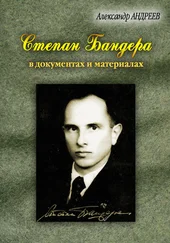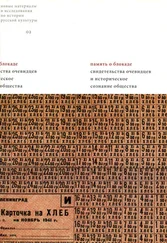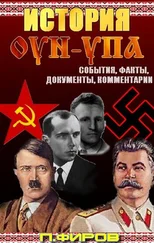Paul Grod, “Ukrainian Community Honors Veterans on Rememberence Day,” UCC Press release, November 11, 2010.
“Rememberance Candle Focus of Holodomor Commemorations: Canadians prepare to mark the 77th anniversary of the Ukrainian Genocide,” UCC National Press release, November 16, 2010; Peter O’Neil, “Harper’s Ukraine famine exaggerated, scholar says,” Edmonton Journal, October 30, 2010: http://www2.canada.com/edmontonjournal/news/story.html?id=ea26329d-c6c5-4e76-b8f5-48ff37f57537 (accessed March 24, 2011).
Whereas the change of national government has effectively ended state support for the OUN cult, this sort of heroization continues on the local level. In December 2010 the Kyiv city government announced plans to rename streets after Roman Shukhevych, Iaroslav Stets’ko, Andrii Mel’nyk, and Olena Teliha. “Na Oboloni z’’iavyt’sia vultrsia Romana Shukhevycha,” Ukrains’ka pravda: Istorychna pravda, December 16, 2010: http://www.istpravda.com.ua/short/2010/12/16/9227/ (accessed December 17, 2010).
“Voin UPA: Bandera — iedinyi lytsar u Evropi, khto 1941 roku skazav Hitleru ‘ni’”: http://aingwar.blogspot.com/ (accessed September 26, 2010).
Oleh Tiahnybok, “Evroparlament he vkazuvatyme Ukraini, koho vyznavaty Heroiami,” February 26, 2010, Ukrains’ka Pravda Blohy: http://blogs.pravda.com.ua/authors/tiahnybok/4b88066cc9c5f/ (accessed April 26, 2010).
For "thick description", cf. Geertz, Clifford: Thick Description: Toward an Interpretive Theory of Culture. In: Geertz, C.: The Interpretation of Cultures: Selected Essays. New York: Basic Books 1973, pp. 3-30. For the critique of ideology, see Grabner-Haider, Anton: Ideologie und Religion. Interaktion und Sinnsysteme in der modernen Gesellschaft. Wien: Herder 1981; Schleichert, Hubert: Wie man mit den Fundamentalisten diskutiert, ohne den Verstand zu verlieren. Anleitung zum subversiven Denken. Mьnchen: Beck 2005, pp. 112–117.
For a discussion of the» Ukrainian National Revolution «in the summer of 1941, cf. Rossolinski-Liebe, Grzegorz: The» Ukrainian National Revolution «in the Summer of 1941: Discourse and Practice of a Fascist Movement. In Kritika: Explorations of Russian and Eurasian History 12/1 (2011), pp. 83-114.
To my knowledge, there are no scholarly works concerning the de-monization of Stepan Bandera by the Soviet propaganda machine.
For the problem of fascism in the OUN, cf. Golczewski, Frank: Deutsche und Ukrainer 1914–1939. Pader-born: Schцningh 2010, pp. 571–591; Rossoliński-Liebe 2011.
Golczewski 2010; Golczewski, Frank: Die Kollaboration in der Ukraine. In: Dieckmann, Christoph (Ed.): Kooperation und Verbrechen. Formen der» Kollaboration «im цstlichen Euro-pa. Gцttingen: Wallstein 2003, pp. 151–182.
Pohl, Dieter: Nationalsozialistische Judenverfolgung in Ostgalizien 1941–1944: Organisation und Durchfehrung eines staatlichen Massenverbrechen. Мunchen: Oldenburg 1997.
Motyka, Grzegorz: Ukraińska par-tyzantka 1942–1960: działalność Organizacji Ukraińskich Nacjonalistуw i Ukraińskiej Powstańczej Armii [The Ukrainian Guerilla 1942–1960: The Activity of the OUN and the UPA] Warszawa: Inst. Studiуw Historycz-nych PAN 2006.
Bruder, Franziska:»Den Ukraini-schen Staat erkmmpfen oder sterben!«Die Organisation Ukrainischer Nati-onalisten (OUN) 1929–1948. Berlin: Metropol 2007.
Berkhoff, Karel C.: Harvest of Despair. Life and Death in Ukraine under the Nazi Rule. Cambridge: Belknap 2004.
Burds, Jeffrey: AGENTURA: Soviet Informants' Networks & theUkrainian Underground in Galicia, 1944-48. In: East European Politicsand Societies 11/1 (1997), pp. 89-130.
Snyder, Timothy: The Reconstruction of Nations: Poland, Ukraine, Lithuania, Belarus, 1569–1999. New Haven: Yale UP 2003; Snyder, Timothy: To Resolve the Ukranian Question Once and for All: The Ethnic Cleansing of Ukrainians in Poland, 1947. In: Journal of Cold War Studies, 1/2 (Spring 1999), pp. 86-120. However, cf. also Jeffrey Burds' review of Snyder's article on http:// www.fas.harvard.edu/~hpcws/com-ment13.htm (accessed: 14.12.2010).
Geertz, Clifford: Ideology as a Cultural System. In: Geertz 1973, pp. 193–233, here p. 219.
Flood, Christopher G.: Political Myth. A Theoretical Introduction. New York, London: Gerland Pub. 1996, pp. 15–26.
Hein, Heidi: Historische Kult-forschung. Digitales Handbuch zur Geschichte und Kultur Russlands und Osteuropa. In: http://epub. ub.uni-muenchen.de/636/1/hein- kultforschung.pdf, pp. 4–5 (accessed: 30.10.2009).
Masaryk was neither a fascist nor an authoritarian dictator but his charisma was used to create a cult which helped to legitimise the existence of Czechoslovakia. Cf. Orzoff, Andrea: The Husbandman: Tomбљ Masaryk’s Leader Cult in Interwar Czechoslovakia. In: Austrian History Yearbook 39 (2008), pp. 121–137.
There are many publications concerning Hitler's charisma. The problematic of the Hitler myth is well explained in Kershaw, Ian: The» Hitler Myth«: Image and Reality in the Third Reich. Oxford: Clarendon Pr. 1987. Cf. also Lepsius, M. Rainer: The Model of Charismatic Leadership and Its Applicability to the Rule of Adolf Hitler. In Pinto, Antуnio Costa/Eatwell, Roger/ Larsen, Stein Ugelvik (Eds.): Charisma and Fascism in Interwar Europe. London: Routledge 2007, pp. 37–52.
Gentile, Emillio: Mussolini as thePrototypical Charismatic Dictator. In: Pinto/Eatwell/Larsen 2007, pp. 113–127.
Payne, Stanley G.: Franco, the Spanish Falange and the Institutiona-lisation of Mission. In: Pinto/Eatwell/ Larsen 2007, pp. 53–62.
Pinto, Antуnio Costa: >Chaos< and >Order<: Preto, Salazar and Charismatic Appeal. In: into/Eatwell/Larsen 2007, pp. 65–75.
Baruch, Marc Olivier: Charisma and Hybrid Legitimacy in Plain's №at fransais (1940–1944). In: Pinto/Eat-well/Larsen 2007, pp. 77–85.
2Goldstein, Ivo: Ante Pavelic: Charisma and National Mission in Wartime Croatia. In: Pinto/Eatwell/Larsen 2007, pp. 87–95; Cox, John K.: Ante Pavelic and the Usta^a State in Croatia. In: Fischer, Bernd J. (Ed.): Balkan Strongmen. Dictators and Authoritarian Rulers of South Eastern Europe. West Lafayette: Purdue UP 2007, pp. 199–238.
Fisher-Galati, Stephen: Codreanu, Romanian National Traditions and Charisma. In: into/Eatwell/Larsen 2007, pp. 107–112.
Hein, Heidi: Der Pitsudski-Kult und seine Bedeutung fer den polnischen Staat 1926–1939. Marburg: Herder Inst. 2002.
Larsen, Stein Ugelvik: Charisma from below? The Quisling Case in Norway. In: into/Eatwell/Larsen 2007, pp. 97-106.
Apor, Balбzs/Behrends, Jan C./Jones, Polly/Rees, E.A. (Eds.): The Leader Cult in Communist Dictatorships: Stalin and the Eastern Bloc. Ba-singstoke: Palgrave Macmillian 2004.
Fenyo, Mario D.: Hitler, Horthy and Hungary. New Haven: Yale UP 1972, p. 26f., p. 77f., pp. 140–143, p. 207f.
Читать дальше









